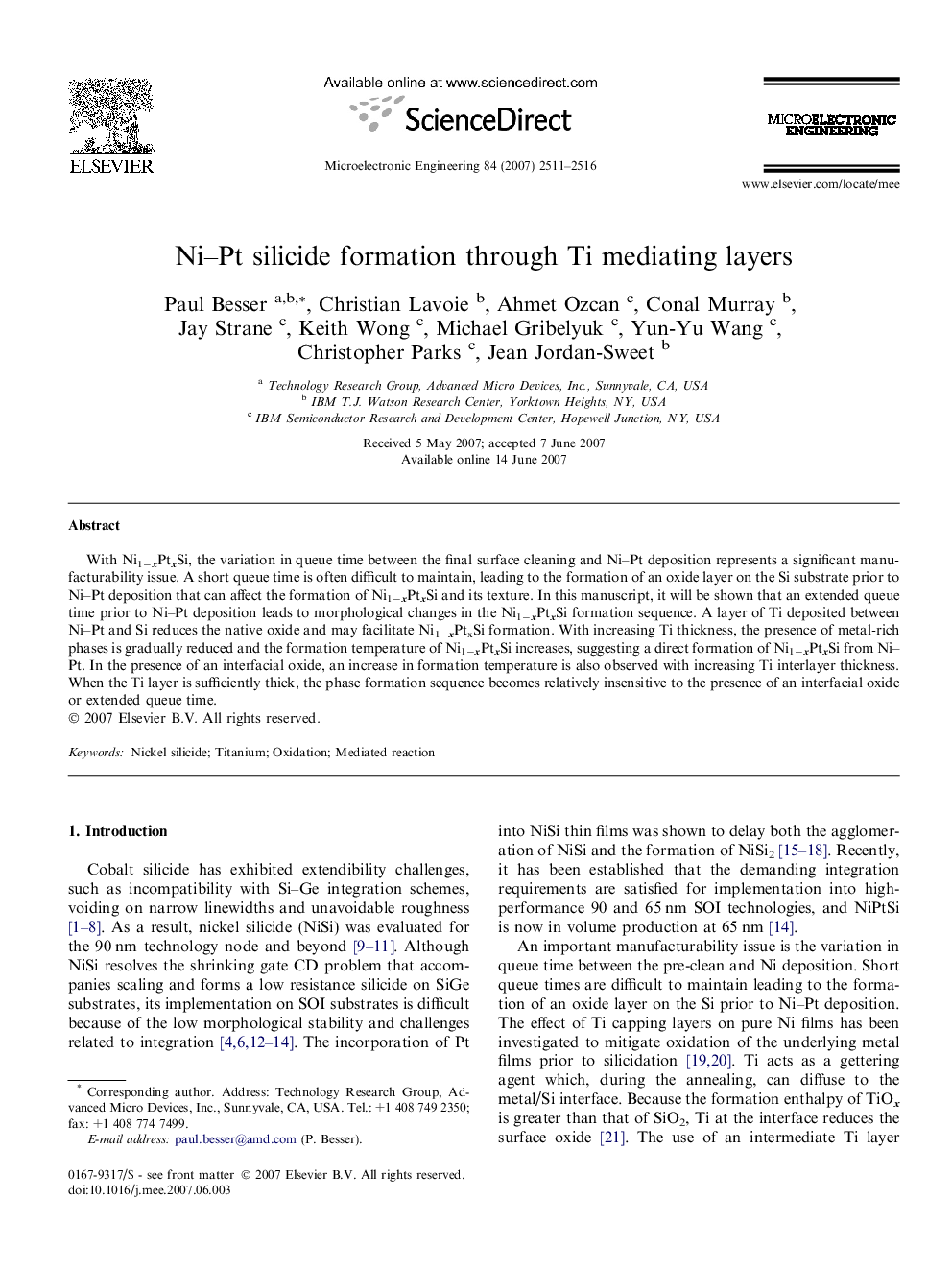| Article ID | Journal | Published Year | Pages | File Type |
|---|---|---|---|---|
| 540775 | Microelectronic Engineering | 2007 | 6 Pages |
With Ni1−xPtxSi, the variation in queue time between the final surface cleaning and Ni–Pt deposition represents a significant manufacturability issue. A short queue time is often difficult to maintain, leading to the formation of an oxide layer on the Si substrate prior to Ni–Pt deposition that can affect the formation of Ni1−xPtxSi and its texture. In this manuscript, it will be shown that an extended queue time prior to Ni–Pt deposition leads to morphological changes in the Ni1−xPtxSi formation sequence. A layer of Ti deposited between Ni–Pt and Si reduces the native oxide and may facilitate Ni1−xPtxSi formation. With increasing Ti thickness, the presence of metal-rich phases is gradually reduced and the formation temperature of Ni1−xPtxSi increases, suggesting a direct formation of Ni1−xPtxSi from Ni–Pt. In the presence of an interfacial oxide, an increase in formation temperature is also observed with increasing Ti interlayer thickness. When the Ti layer is sufficiently thick, the phase formation sequence becomes relatively insensitive to the presence of an interfacial oxide or extended queue time.
